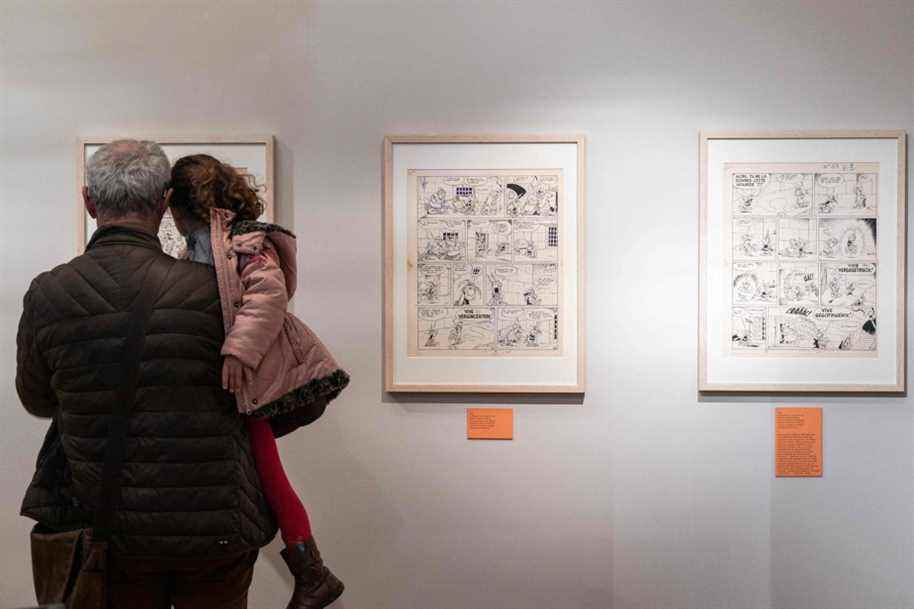(Angoulême) Discover the manufacturing secrets of the screenplays of Asterix, Lucky Luke, Iznogoud or Petit Nicolas: for the first time, an exhibition, in Angoulême, is devoted to the screenwriting work of René Goscinny, a profession that he has ‘come out of the shadows’.
Posted at 12:33 p.m.
The exhibition “René Goscinny screenwriter, what a job! “, which opened Tuesday at the Museum of Angoulême, presents some 200 unpublished or rare pieces, coming in particular from the archives of the René Goscinny Institute and the National Library of France.
These plates, letters or manuscripts illustrate the “very rigorous” methods of the famous screenwriter, indicates Jean-Pierre Mercier, curator of the exhibition with Romain Brethes.
“For each album, Goscinny discussed with its designer, Uderzo, Morris or Sempé, in order to compare their ideas, around a beer or by exchange of letters”, explains the curator of the exhibition, “he then got down to his typewriter and wrote down the course of the story. A paragraph equals a page.
As proof, the copy of the plate from the first page of Asterix the Gaul – “the original plate has disappeared, no one knows where it is”, says Mr. Mercier. Alongside, working notes, “we can see the scenario thought out by Goscinny. On the left of the sheet, there is the description of what the designer should draw and on the right, the commentary text and dialogues”.
Thus, as a commentary, Goscinny typed the phrase “Leaders such as Vercingetorix must lay down their arms at Caesar’s feet” then the “Oop” of pain from the Roman leader who receives his arms on his feet. “If you look, that’s what you find on the board,” says Mr. Mercier.
In 22 years in the business, Goscinny has done absolutely phenomenal work. He wrote 450 comic scripts, that’s thousands and thousands of pages.
Jean-Pierre Mercier, curator of the exhibition
Jam and wild boar
For these scenarios, he documented himself. “For Lucky Luke, he read the biographies of Billy the Kid, Jesse James, etc. And he was absolutely mad about movies. He never missed a single western on TV. He also said that his real inspiration was Laurel and Hardy.
For Asterix, beyond the famous pink pages of Latin quotations from the Larousse dictionary, “he read many books on Roman history”. His dictionary and some of his history books are on display.
“We also wanted to show what defines Goscinny. He was an endless source of gags, cult phrases – “wants to be caliph instead of the caliph” – leitmotif. At Goscinny, we eat all the time. Alceste, in Le Petit Nicolas, he always has a slice of jam in his hand. Asterix abounds with wild boars”.
The journey recounts his beginnings as a draftsman, his time in New York, his various collaborations up to his position as editor-in-chief of the BD weekly Pilote.
The exhibition highlights the moment when, in 1956, René Goscinny and the other great creators of the time such as Uderzo, Franquin or Charlier, tried to create an independent Syndicate of designers and screenwriters in Brussels, at a time where “the cartoonists weren’t treated very well and the scriptwriters were invisible”. In addition, the “millions of copies sold of Asterix have made it possible to bring the scriptwriting profession out of the shadows”, he adds.
The exhibition is presented until March 17 and then will go from April to the Château de Malbrouck in Manderen.
